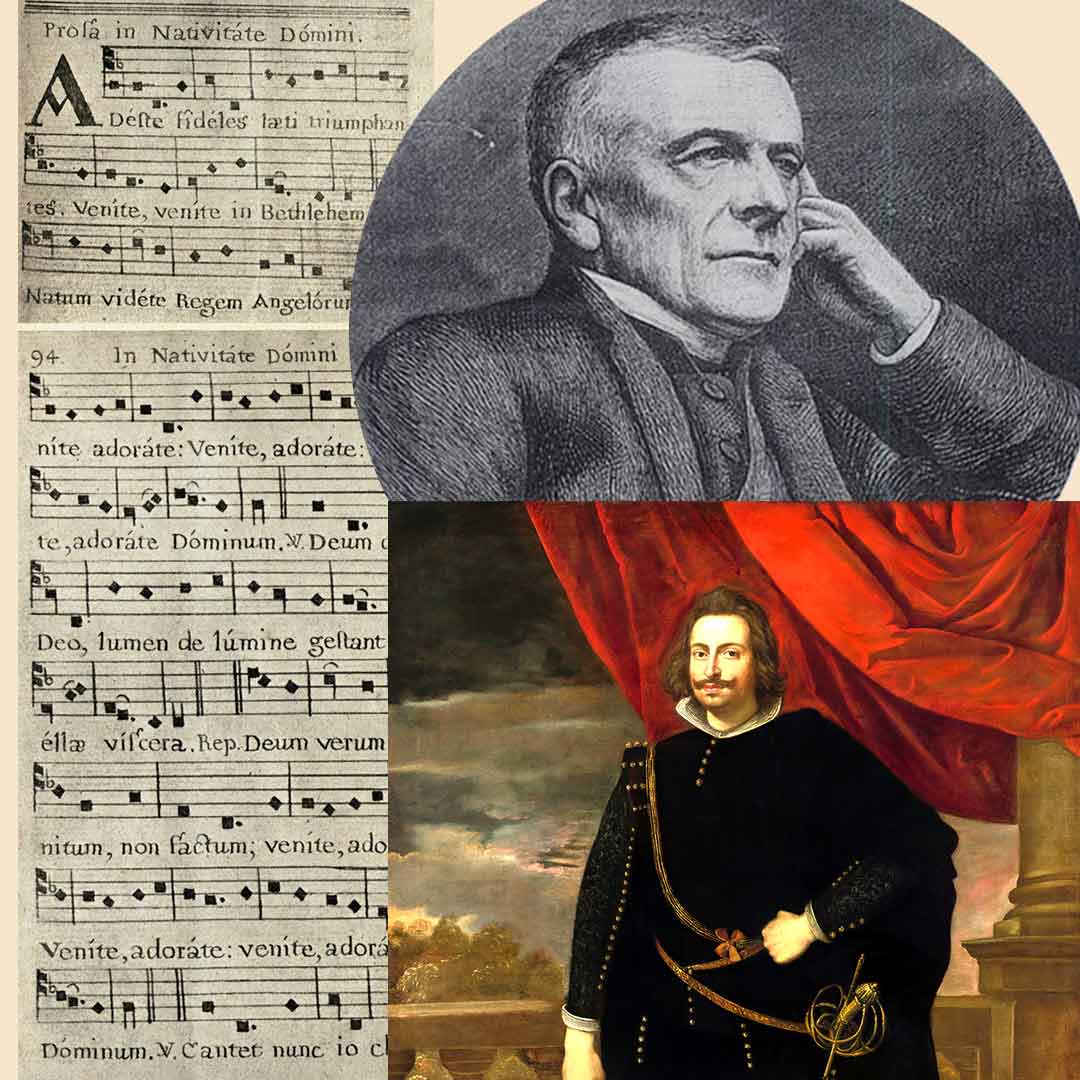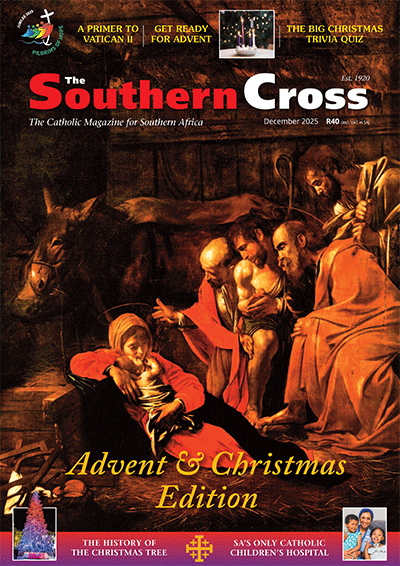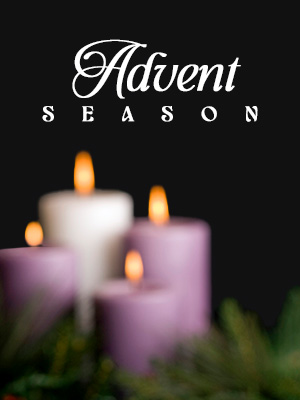The Story Behind ‘O Come All Ye Faithful’

Right: John Francis Wade’s unsigned notation from 1745. Above: Fr Oakeley, who translated “Adeste Fideles” into English, and (below) King John IV of Portugal.
One of the most beloved — and most Catholic — Christmas carols in the English language is also well-known by its Latin title. Where some may sing “O Come All Ye Faithful”, others might intone “Adeste Fideles”. And some strike a compromise between the two. When the great vocalist Nat King Cole recorded a Christmas album in 1960, he opted for “Adeste Fideles” as the title, sang the first verses in English, and then switched to Latin .
Nobody really knows for certain who wrote that beautiful melody, with the contenders including even a king. The earliest signed copies of the notation are by John Francis Wade, an English Catholic who lived from 1711-86. He had to flee his homeland after the crushing of the Jacobite uprising of 1745, which had sought to return the Stuarts — and thus Catholicism — back to the English throne.
There are some who read a coded political message into the words of “Adeste Fideles” — or “In Nativitate Domini Hymnus”, as Wade’s first signed publication in 1750 titles the hymn. These words were initially four verses of Latin, and are pretty much the equivalent of what we sing in English today. It’s not clear either whether these were even written by Wade. In 1750 there were no copyright laws and attributions were optional. Texts and music could be faithfully reproduced, or they could be edited or adapted. And that was how Wade made his living in French exile: by copying and selling plainchant and other music.
There is a theory that Wade might have borrowed the melody from a comic opera, Acajou, by Charles Simon Favart, which was written in the 1740s, around the same time Wade is believed to first have written “Adeste Fideles”.
Some musicologists have suggested that “Adeste Fideles” was written by anonymous Cistercian monks in France, some time between the 6th and 12th centuries. It wouldn’t have been the first Christmas hymn — the first known one was written by St Ambrose in the 4th century — but these were not common in medieval Europe.
Written by a king?
There are several other candidates for the authorship of “Adeste Fideles”, all preceding Wade by many decades. Leading among them is John Reading, a well-known English composer and organist who lived from 1645-92.
Another contender is King John IV of Portugal (1604–56). King John is better known as the leader of Portugal’s secession from Spain than he is as a tunesmith, but he was a keen patron of music and the arts, and himself a composer of notable skill. However, there is no written record of him having composed “Adeste Fideles”, or other sacred works which some attribute to him. His interest in sacred music was informed by his devout Catholic faith; John IV instituted Our Lady the Immaculate Conception as Portugal’s patron.
But the king’s association with the hymn might be rooted in a misunderstanding. For a long time, “Adeste Fideles” was known as “The Portuguese Hymn”, on account of it having been performed at a recital in the Portuguese embassy chapel in London in 1795, in Wade’s version. The duke of Leeds witnessed the performance and was so impressed that he commissioned an orchestral treatment, which in turn popularised the hymn in England.
By then, “Adeste Fideles” was already popular in France and Germany, where it was used as a Christmas Eve processional. In the late 18th century, a French priest, Fr Jean-François-Étienne Borderies, added three verses.
“Adeste Fideles” was translated several times into English before 1852, when the words we now know as “O Come All Ye Faithful” were first published. The first four verses, from Wade’s Latin text, were translated by Fr Frederick Oakeley, a convert priest who lived from 1802-80. A prolific author and later canon of Westminster diocese, Fr Oakeley was a follower of his fellow convert St John Henry Newman.
The three verses by Fr Borderies were later translated and published in 1885 as “Ye Faithful, Approach Ye” by William Thomas Brooke (1848-1917), an Anglican. He placed those verses after the second in Fr Oakeley’s version. This is the order that now has become standard for “O Come All Ye Faithful”.
“Adeste Fideles” has been translated into at least 125 languages.
More stories behind the carols
- Shrines Around the World: Our Lady of Guadalupe - December 12, 2025
- The Chosen’s Mother Mary: I loved washing Jesus’ hair - December 5, 2025
- Book Review: Benedict, Baltimore and the Barbary Pirates - December 4, 2025



